According to the Florida Museum’s International Shark Attack File, 44 recorded shark attacks have occurred in Texas waters since 1911. But a few shark-infested Texas beaches have more attacks than any other place in Texas. Here, we’ll learn about the specific places in the Lone Star State that have been home to more shark attacks than others.

Despite the 44 confirmed shark attacks in Texas, your chances of being bitten by a shark in Texas are incredibly small. In fact, the last recorded Texas shark attack occurred in 2016. The last fatal shark attack in the state occurred in 1962. Prior to that, there hadn’t been a fatal Texas shark attack since 1937.
Now, let’s take a look at the shark-infested Texas beaches with the most attacks.
5. Pirates Beach
One of the most recent shark attacks in Texas occurred at Pirates Beach in 2016. At this shark-infested Texas beach, a six-year-old girl was bitten on the leg by a 3-4 foot shark of unknown species. In fact, the species of shark implicated in the attack is almost never recorded. Before that, the last attack at Pirates Beach occurred in 2004 and involved a 16-year-old boy who was bitten on the leg by a 3-5 foot long shark. Both children survived with only minor injuries.
4. Surfside Beach
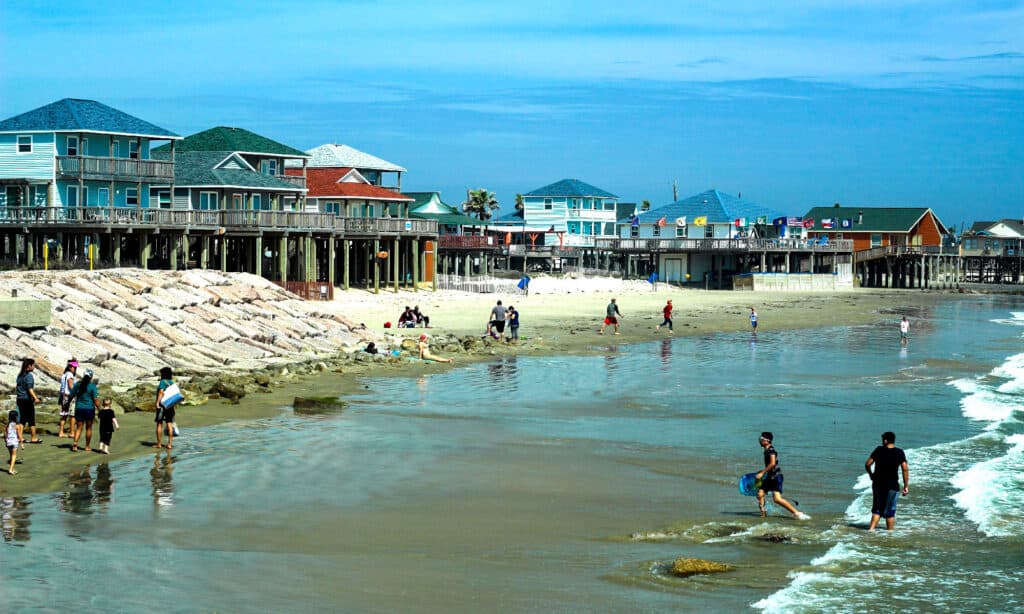
South of Galveston, Surfside Beach is located near Freeport, Texas. It’s just north of the outlet for the Brazos River.
©Duane Gore/Shutterstock.com
Surfside Beach is one of the most shark-infested Texas Beaches. This beach has been home to three separate attacks, none of which were fatal. The first shark attack at Surfside Beach occurred in 1989 and involved a 12-year-old boy. The boy was bitten by a four-foot-long shark while surfing. The next attack occurred in 2013 and involved a 15-year-old boy who sustained minor injuries. The most recent shark attack at Surfside Beach occurred in 2016. This attack involved an adult male spearfisher who was bitten by a pair of bull sharks.
3. Galveston Beach
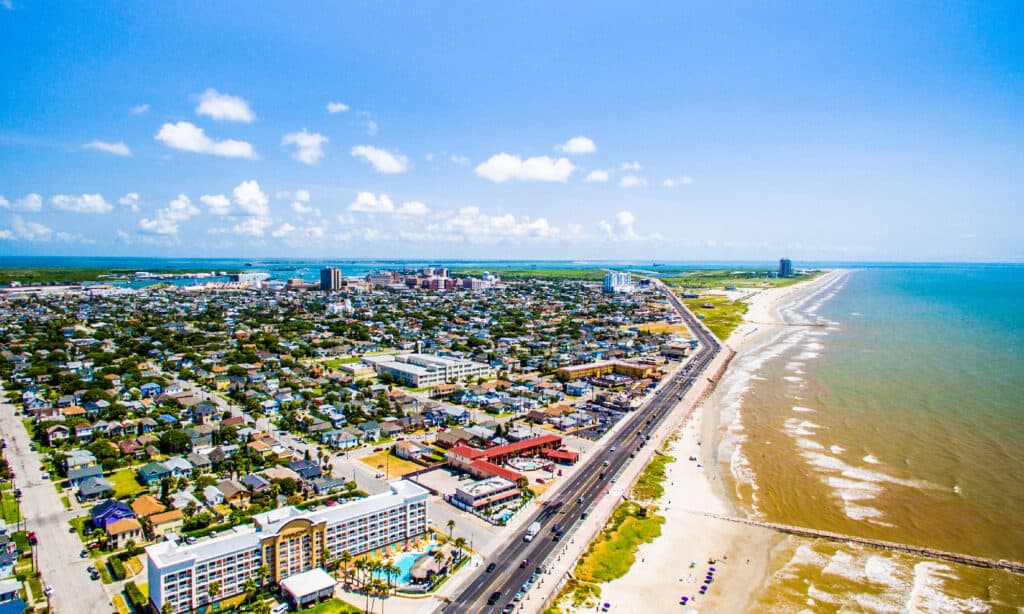
One of the most popular beaches in Galveston, Galveston Beach features white sands and an iconic promenade.
©iStock.com/Eric Overton
Galveston Beach is another shark-infested Texas beach. This beach has had three attacks, one of which was fatal. The fatal attack occurred in 1937 and resulted in the death of a 14-year-old boy who had been swimming at night. The next attack occurred in 2010 and involved an adult male fisherman. The final attack occurred in 2015 and involved a 13-year-old boy who sustained minor injuries from a 4-5 foot-long shark.
2. South Padre Island
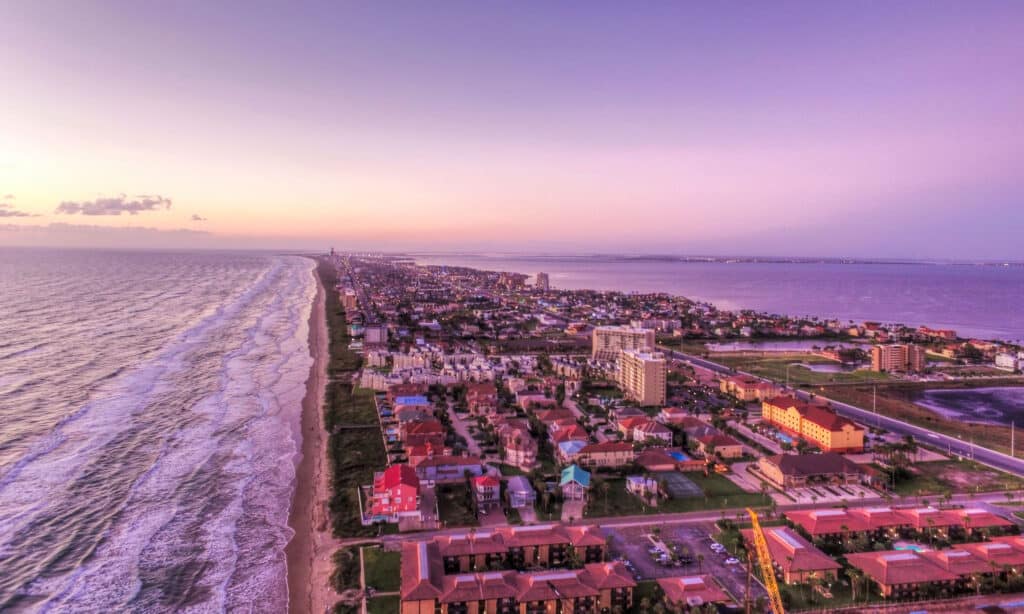
Located on the southernmost tip of Texas and facing east onto the Gulf of Mexico, South Padre Island is full of beaches and resorts.
©iStock.com/Hundley_Photography
The second most shark-infested Texas beach is actually a whole island of beaches. South Padre Island has had eight total shark attacks. The first occurred in 1953, and the most recent occurred in 2011. None of the attacks were fatal, and most resulted in only minor injuries.
The most recent attack, in 2011, involved an adult male who received minor injuries from a shark while surf fishing. In 2009, a shark bit a 14-year-old girl. Previously, in 2006, a man was bitten on the foot while surfing. Another man was bitten on the lower leg in 2005. In 2004, a mako shark bit a surfer’s board without actually biting the surfer. In 2001, a shark bit a 14-year-old boy on the leg, though the injury was minor. Before 2001, there hadn’t been an attack since a bite on a 13-year-old girl in 1984.
1. Mustang Island/Port Aransas

Just outside of Corpus Christi, Mustang Island sports continuous beaches facing out onto the Gulf of Mexico.
©iStock.com/ShengYing Lin
The most shark-infested Texas beach is located on Mustang Island. Mustang Island encompasses a series of connected beaches, which terminate at Port Aransas in the north. These beaches have seen nine non-fatal shark attacks over the years. In 1987, the first year of shark attacks on Mustang Island, there were three attacks.
The most recent shark attack on Mustang Island occurred in 2011. It involved a 14-year-old boy who was bitten on the foot while fishing. Prior to that, the last attack occurred in 2005, when a six-year-old boy was bitten on the foot. Five years before that, in 2000, a lemon shark bit a five-year-old boy on the foot. Additional attacks occurred in 1990 and 1995, all of which resulted in minor injuries.
How to Stay Safe at the Beach
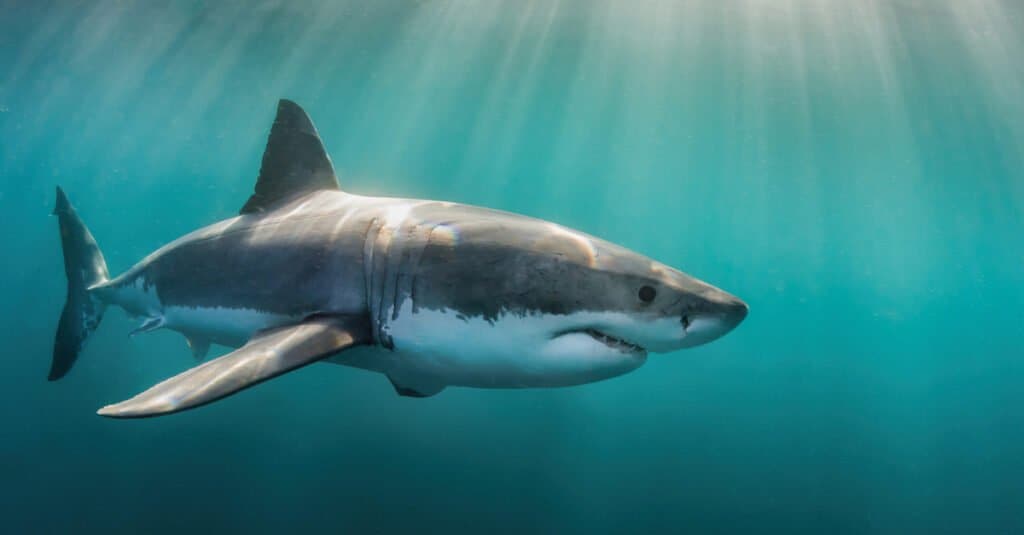
Not all sharks bite humans.
©Fiona Ayerst/Shutterstock.com
Anytime you step into the ocean, you’re stepping into the sharks’ domain. The ocean is their home; it’s where they birth their pups, hunt for food, and keep the marine ecosystem in check. Sharks are both apex predators and keystone species, which means their presence is vital to maintaining the health of our marine food web.
So, to reduce your risk of being attacked by a shark while swimming, wading, surfing, or fishing, here are a few easy steps you can take. First, avoid wearing flashy jewelry or bright, contrasting colors. Both of these things attract sharks’ attention. Don’t splash unnecessarily, and never swim near popular fishing areas or near continental dropoffs, as sharks tend to hunt in these places. Be mindful of your surroundings, and if you see a shark, don’t approach it.
Remember, sharks are not mindless killers; they’re not swimming around looking for humans to bite. The overwhelming majority of bites on humans are non-fatal and often due to either mistaken identity or self-defense.
Summary of 5 Shark-Infested Texas Beaches with the Most Attacks
| Number | Location |
|---|---|
| 1 | Pirates Beach |
| 2 | Surfside Beach |
| 3 | Galveston Beach |
| 4 | South Padre Island |
| 5 | Mustang Island |
Honorable Mentions: Shark-Infested Beaches in the U.S.
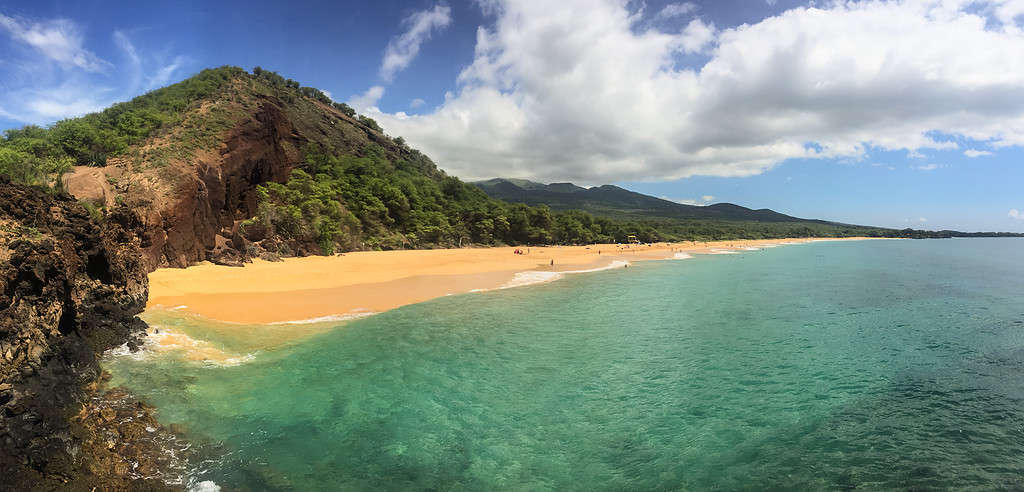
Makena Beach, Maui has many sharks. In the Spring the waters drop to cooler temperatures welcoming shark species.
©dronepicr / CC BY 2.0 – License
Here are a few honorable mentions that didn’t make the list:
- New Smyrna Beach, Florida
- Makena Beach, Maui
- Bolinas, California
New Smyrna Beach is found near Ponce de Leon Inlet, which serves as a connection between the Halifax River and the Atlantic Ocean. This inlet generates a powerful tidal current in the ocean, creating a great feeding area for sharks and a hotspot for surfers. Hence, it’s often referred to as the Shark Bite Capital of the World.
Great white sharks have been observed near the coastal shores of Hawaii, specifically between January and April. This is when the water temperature drops below 75 degrees Fahrenheit, as great whites tend to favor cooler waters.
Bolinas, since 1926, has recorded 11 non-fatal shark encounters. Engaging in activities like surfing, bodyboarding, bodysurfing, and diving in the ocean always carries some degree of risk.
The photo featured at the top of this post is © wildestanimal/Shutterstock.com
Thank you for reading! Have some feedback for us? Contact the AZ Animals editorial team.






